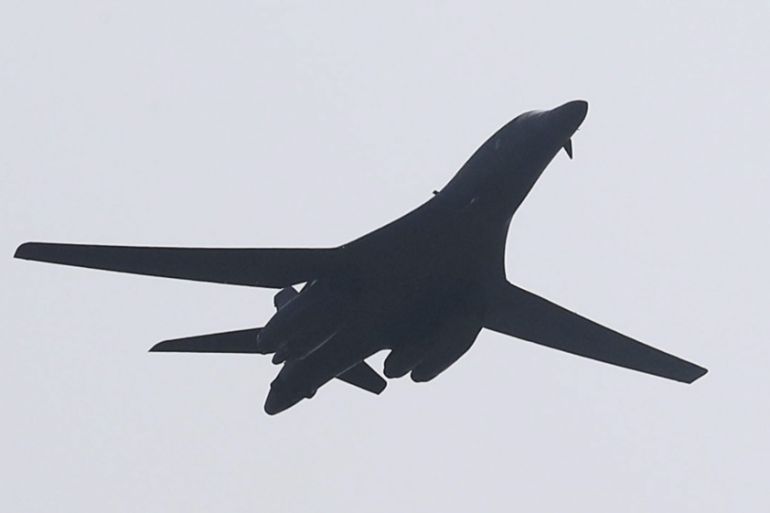US jets fly over S Korea in show of force
Demonstration of solidarity between the allies comes in response to North Korea’s most powerful nuclear test to date.

Two US jet bombers have flown over South Korea in a show of force and solidarity after North Korea’s nuclear test last week.
The pair of supersonic B-1 Lancer strategic bombers, based in Guam, were escorted on Tuesday by South Korean and US fighter jets in a low-altitude flight over South Korea’s Osan airbase.
The facility is 77km from the demilitarised zone border with the North and about 40km from the South’s capital Seoul.
|
|
Speaking in Seoul on Tuesday, Sung Kim, the US special representative on North Korea, said the US remained open to authentic, meaningful dialogue with Pyongyang on ending its pursuit of nuclear weapons.
“Our intention is to secure the strongest possible [UN Security Council] resolution that includes new sanctions as quickly as possible,” Kim announced after meeting his South Korean counterpart.
He said the US would work with China, North Korea’s major diplomatic ally, to close loopholes in existing resolutions, which were tightened with China’s backing in March.
“China has been very clear that it understands the need for a new UN Security Council resolution in response to the latest North Korean nuclear test,” Kim said.
However, China and Russia, which strongly oppose a recent decision by the US and South Korea to deploy an advanced anti-missile system in the South to counter the North’s missile threat, have shown reluctance to back further sanctions.
“Both sides think that North Korea’s nuclear test is not beneficial to peace and stability on the Korean peninsula,” China’s official People’s Daily newspaper said on Tuesday after a high-level China-Russia security meeting in Beijing.
READ MORE: South Korea – North Korea ready for new nuclear test
“At present, we must work hard to prevent the situation on the peninsula continuing to escalate, and put the issue of the nuclearisation of the peninsula back on the track of dialogue and consultation.”
Such flyovers are common when tension flares on the Korean Peninsula, which is technically in a state of war as there has never been a peace treaty to officially end the 1950-53 Korean War.
South Korea does not have nuclear weapons and relies on the US “nuclear umbrella” as a deterrent to North Korea.
The US also keeps more than 28,000 troops in the South, and tens of thousands more in Japan.
Last week’s nuclear test, the North’s fifth, was its most powerful to date.
READ MORE: North Korea nuclear test – world leaders react
North Korea’s claim to have used “standardised” warheads in the detonation makes some outsiders worry that it is making headway in its push to develop small, sophisticated warheads that can be mounted on missiles that can reach the US mainland.
South Korea, the US and their allies have promised to apply more pressure and sanctions after the test, the second this year.
“The United States and [South Korea] are taking action every day to strengthen our alliance and respond to North Korea’s continued aggressive behaviour,” General Vincent Brooks, commander of US Forces Korea, said in a statement.
Sung Kim, the US special envoy for North Korean policy, met South Korean officials in Seoul on Tuesday and said that the US is working closely with other nations to work out new, stronger sanctions on North Korea.
|
|